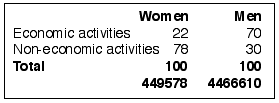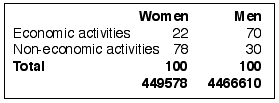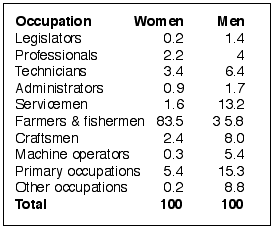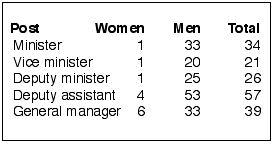
On the Sideline of Woman & Population’s Symposium: Towards Activating Woman’s Role in Economic Activities [Archives:2001/44/Business & Economy]
October 22 2001
Farouk Al-Kamali
Yemen Times
Taiz
Women, as men, have lived through different historic decades which were accompanied by different political, social, and economic developments. The fact that ways and modes of life changed in our society from the 1950s to 1970s has also resulted in a change of women’s thinking, their awareness and vision for future, level of education in all social, cultural and political dimensions of the society.
In the 1950s, women’s job was restricted to help their families in farming and in the house, especially if her husband migrated to another country to get a job and provide bread on the plate. In the Sixties, we witnessed the first changes when women in towns started to have access to education and labor opportunities. Yemen’s constitution also stipulated that they were equal to men. In the Seventies, the number of women enrolling in schools sharply increased. They started to participate in the social, cultural and political affairs of their communities and their country. They started to make their voices heard by participating in local and international meetings and conferences.
Consequently, studies have confirmed that women participation is of major importance in the process of development. However, a study of women situations in different sectors such as education, health services, and political, economical, cultural, and social activities pointed out that the percentage of poor women have reached 60.3 percent against 49.7 percent only for men. Other studies also highlighted that around 71 percent of women in the Yemeni society are still illiterate and general female enrollment in schools is still low in comparison with men. Two thirds of women, particularly girls in the basic education, are not attending schools, which is a major problem according to many specialists.
Yemeni Woman & Economic Activities
Studies said that the agricultural sector is the place in which women spend most of her time. Between 680 and 936 women work in different economic sectors, 680 to 936 among them worked in villages and in farms. At the same time, around 72 of them are working in the urban areas. Despite of these numbers, statistics pointed out that tasks performed by women are usually basic and its percentage rate dropped to 1 percent of the working population.. The female employees reached 30 percent of the clerical works, while women working in handicrafts average 15 percent and 10 percent as assistants. Female workers in the field of sales reached 4 percent.
The Manager of the Women Department in the Ministry of Planning and Development, Tahani Saeed, presented a working paper in the National Symposium. She said that the deterioration of economic activities could be attributed to the role of women. Women are indeed prevented from participating in public life on an equal foot with men and marriage of women at early age is also a major obstacle to their increasing participation.
The following chart focuses on women involvement in economic and non-economic activities in comparison to men:

The study stated that male working forces for paid jobs represent 50.6 percent of the total, while those who work on their own expense total 33.5 percent. Whereas the female working force without pay reached 61.9 percent of the total, women with paid jobs count for 13.8 percent, which is considered to be the lowest percentage.

Studies have confirmed that women’s representation in the governmental decision-making bodies does not reflect the reality of increasing demands to allow women to participate effectively and freely in the political arena or mapping out the developmental policies. The following table illustrates the position of both men and women in decision-making process:

Women participation in the local election is also limited. Women’s participation in the elections have reached 6 percent while the male participation have reached 94 percent. It cannot be denied that female political participation has been clearly encouraged and that no kind of political injustice towards women can be observed. However, our society is still unable or unwilling to believe in woman’s participation in politics nor ready to accept her in this role. Ways of handling political issues, either on the governmental or opposition levels, do not encourage women to take part as they are usually done in qat chewing sessions.
Studies have urged women to participate in economic decision-making, such as planning and managing projects by adopting practical policies and procedures with the aim of augmenting women’s participation in working on the developmental policies in decision-making.
In short, women have the right to participate in the political life and they could mix with men, but in accordance with the principles of our religion.
——
[archive-e:44-v:2001-y:2001-d:2001-10-22-p:./2001/iss44/b&e.htm]


